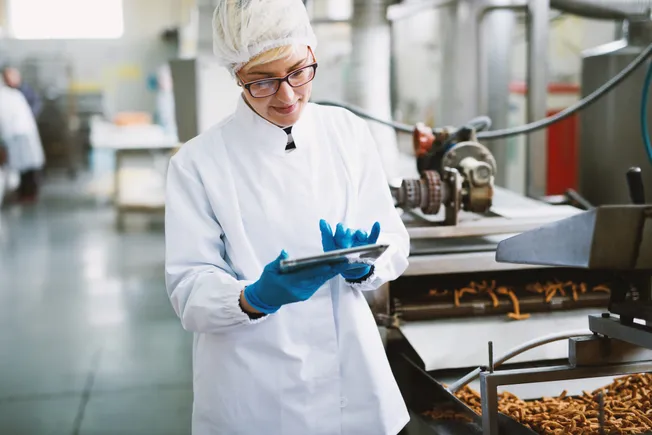As if being caught up in a cycle of disruption isn’t enough, the food and beverage (F&B) industry is also currently grappling with several other trials. For example, demand for cradle-to-grave traceability and transparency is on the rise as consumers and regulators push for ethical practices. Plus, as consumers prioritize sustainability and health, producing a successful F&B product is more complex than it’s ever been.
What do all these changes mean for your F&B brand? Building durable, responsive, and adaptive supply chains has surpassed “important” to become “essential.” Your supply chain is connected to your mission to provide value, build trust and loyalty, and uphold standards.
Outdated Sourcing Approaches Won’t Cut It
Just a few years ago, you could count on your company’s curated supplier network to source ingredients and ensure quality. If those connections didn’t pan out, then Google could point you to an alternative. While it could take several days — or even weeks — to get the sample you need so you can determine whether the ingredient will work, the process kept up with the speed of innovation at the time.
Today, however, traditional sourcing approaches are too slow and inefficient for an industry that’s moving as quickly as F&B.
“If you’re waiting for someone to call you back while your competitor is already there, locking up supply and negotiating favorable pricing, you may never get that call back,” Paul Bradley, Senior Director of Product Marketing at TraceGains, points out.
AI: The Alternative to Traditional Sourcing Methods
Thoughtfully applied artificial intelligence (AI) can speed up F&B innovation by helping companies connect with suppliers and ingredients they may have never unearthed in their proverbial Rolodex.
“Artificial intelligence can play an important role in spotting opportunities that even a very experienced procurement officer may miss,” says Bradley. “It can pinpoint sourcing trends in the wider industry, draw connections between product ideas, and find alternate solutions that may not be obvious.”
It can also bring information together in new ways to spot risks; enable teams to source, qualify, and move new ingredients into production faster; and add sustainability insights to the process. It moves product development from a siloed workflow into a cross-functional discipline.
“F&B data streams have traditionally been siloed by department,” says Bradley. “Procurement does their thing over here while quality does their thing over there and regulatory compliance happens at headquarters. AI finds ways to look across that information, normalize it, spot what’s important in one of those areas, amplify collaboration around it, and ensure visibility into it.”
This helps F&B brands respond quickly to change, whether it’s in terms of consumer demand, the marketplace, or the sourcing environment. And companies that move faster gain a competitive advantage.
For example, AI can help R&D teams determine potential outcomes before production begins. By using the technology to model product variations and simulate product development, experts can better understand the implications of changing an ingredient or adjusting manufacturing processes before they head to the bench, saving time and resources.
There’s a Caveat: You Need Good Data
AI’s intelligence hinges on data. Where that data comes from — and how accurate it is — can make or break AI’s performance.
Case in point: Ask ChatGPT for an ingredient solution, and it will leverage data that may pull your company backward instead of propelling it forward. Most of the data it harvests from consumer blogs, social media posts, and Reddit strings won’t apply to the commercial development of a F&B product, but “it will still give you incorrect responses with all the confidence in the world,” says Bradley.
Instead of relying on consumer-fed data, F&B companies should rely on AI platforms driven by industry-specific data — information that comes from a vetted global network of F&B suppliers, brands, and manufacturers.
“As more information is added to the network,” explains Bradley, “it grows organically and creates an even stronger, more sophisticated baseline of industry-specific data for AI to use.”
It’s Time to Decide: Slow to Adopt or Quick to Innovate?
While AI has these capabilities right now, F&B is known for being an industry that’s slow to adopt new technology. Instead of being on the cutting edge, many brands have been more comfortable waiting as others dip their toes in the water first.
But that approach no longer serves F&B companies. “Things are moving so quickly in terms of technology development, especially related to artificial intelligence, that you can no longer afford to wait,” emphasizes Bradley. “The idea that you can hold off another five or 10 years for technology to stabilize is a fundamental misunderstanding of how the technology universe works right now.”
A company’s willingness to adopt new sourcing approaches will determine how efficient they become at trialing concepts, testing products, failing fast (and inexpensively), and trying again. “Companies abiding by outmoded approaches are likely to be passed by companies that find new ways to move faster,” says Bradley. “The forward-thinking brands will be the ones thinking about how to break out of those traditional mindsets.”
To learn more about tapping into AI and overcoming the most common challenges in NPD visit TraceGains.com.




1734894422-0/Copy-of-Untitled-(72)1734894422-0.png)


